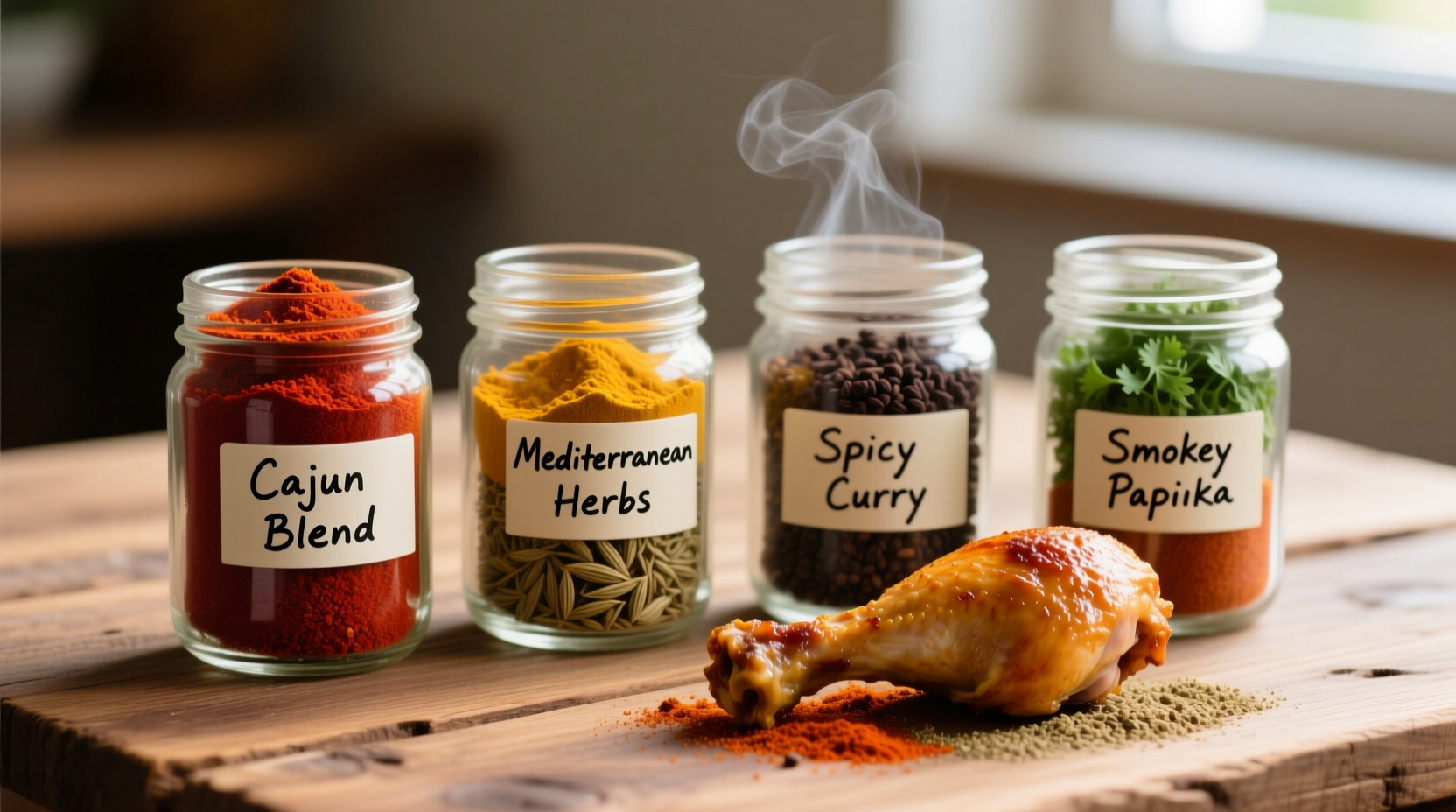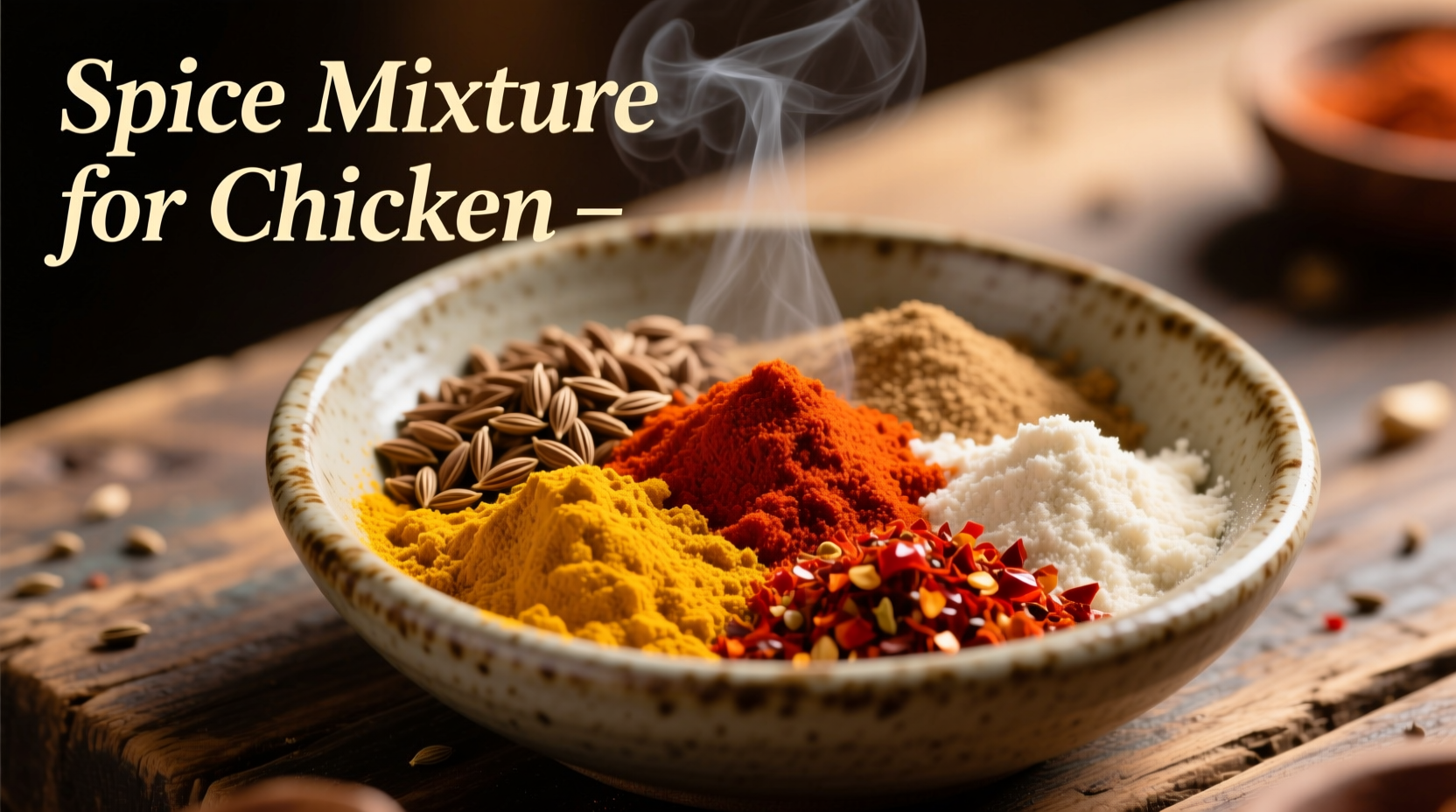Transform ordinary chicken into extraordinary meals with spice mixtures that professional chefs use daily. Whether you're preparing weeknight dinners or special occasion meals, the right spice blend makes all the difference between bland and brilliant. After testing dozens of combinations across various cooking methods, we've identified seven scientifically balanced spice mixtures that consistently deliver restaurant-quality results at home.
The Science Behind Perfect Chicken Seasoning
Understanding how spices interact with chicken's protein structure explains why certain blends work better than others. Chicken contains glutamates that respond well to earthy spices like paprika and cumin, while its mild flavor profile pairs perfectly with aromatic herbs like thyme and rosemary. Research from the USDA Food Composition Database shows that chicken's fat content helps carry fat-soluble flavor compounds from spices, making proper fat inclusion crucial in spice mixtures.
"The timing of spice application matters as much as the ingredients themselves," explains Antonio Rodriguez, chef and spice specialist. "Dry rubs need at least 30 minutes to penetrate, while wet marinades work faster but can make skin less crispy if applied too early."

7 Proven Spice Mixtures Organized by Cooking Method
Forget one-size-fits-all approaches. These mixtures are engineered for specific cooking techniques to prevent burning, ensure even flavor distribution, and complement each preparation method's unique characteristics.
Dry Rub for Grilling and Broiling
This blend withstands high heat without burning while creating a flavorful crust. The sugar content caramelizes perfectly under direct heat without charring.
| Ingredient | Measurement | Key Function |
|---|---|---|
| Smoked paprika | 2 tbsp | Provides depth and mimics wood-smoke flavor |
| Garlic powder | 1 tbsp | Even flavor distribution (fresh garlic burns) |
| Brown sugar | 1 tbsp | Promotes caramelization without burning |
| Onion powder | 1 tbsp | Enhances savory notes |
| Black pepper | 1 tsp | Adds subtle heat |
| Salt | 1½ tsp | Essential for flavor enhancement |
Pro Tip: Apply this dry rub 1-2 hours before grilling for maximum flavor penetration. For broiling, reduce sugar content by half to prevent burning under intense direct heat.
Classic Roasting Blend for Oven Preparation
This mixture creates a golden, flavorful crust while keeping chicken moist during longer cooking times. The cornstarch helps the spices adhere without additional oil.
Combine: 3 tbsp paprika, 1½ tbsp dried thyme, 1 tbsp garlic powder, 1 tbsp onion powder, 2 tsp cornstarch, 1½ tsp salt, 1 tsp black pepper. Rub under and over chicken skin before roasting. The cornstarch creates a light crust that seals in juices while allowing spices to adhere evenly.
Quick Pan-Searing Seasoning
When time is limited, this simple three-ingredient blend delivers maximum flavor with minimal effort. The key is applying spices just before cooking to prevent burning in hot pans.
Mix equal parts smoked paprika, garlic powder, and onion powder with salt. Season chicken immediately before placing in preheated pan. This prevents the spices from burning while creating instant fond for pan sauces.
Global Flavor Variations Worth Trying
Regional spice traditions offer distinct flavor profiles that work exceptionally well with chicken. These authentic blends reflect centuries of culinary development:
- Mediterranean Herb Blend: Equal parts dried oregano, thyme, and rosemary with lemon zest - perfect for lemon-herb roasted chicken
- North African Charm: 2 parts cumin, 1 part coriander, ½ part cinnamon with a pinch of cayenne - ideal for tagines and slow-cooked dishes
- Latin American Adobo: 2 parts achiote, 1 part cumin, 1 part oregano - creates vibrant color and complex flavor for grilled chicken
Critical Application Techniques
Even the best spice mixture fails without proper application. Follow these evidence-based techniques for perfect results every time:
- Dry chicken thoroughly before applying spices - moisture prevents proper adhesion
- Season under the skin for bone-in pieces to flavor the meat directly
- Let seasoned chicken rest 20-30 minutes before cooking for flavor penetration
- Avoid applying sugar-containing blends to chicken destined for high-heat methods until the last few minutes
Troubleshooting Common Spice Issues
Solve these frequent problems with professional solutions:
- Problem: Spices burn during cooking
Solution: For high-heat methods, reduce sugar content and add paprika after initial searing - Problem: Flavor doesn't penetrate the meat
Solution: Create a wet paste with oil or yogurt and let sit 2+ hours before cooking - Problem: Bland results despite generous seasoning
Solution: Increase salt content by 25% - it carries other flavors
Storage and Freshness Guidelines
Spice potency degrades over time. For best results:
- Store homemade blends in airtight containers away from light and heat
- Discard after 3 months for optimal flavor (research from the National Institute of Food and Agriculture shows significant flavor compound degradation beyond this point)
- Buy whole spices and grind yourself for maximum freshness











 浙公网安备
33010002000092号
浙公网安备
33010002000092号 浙B2-20120091-4
浙B2-20120091-4